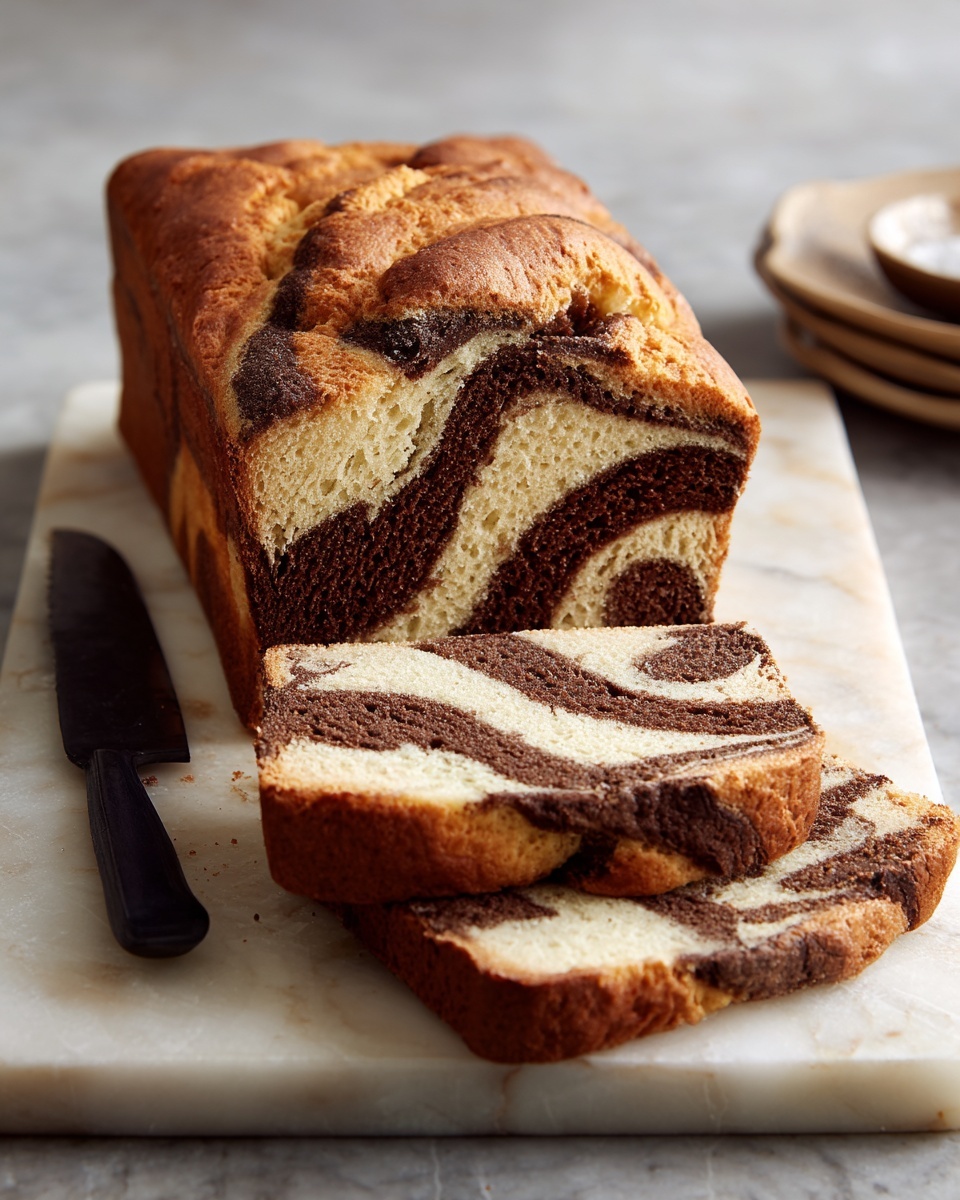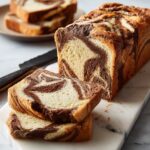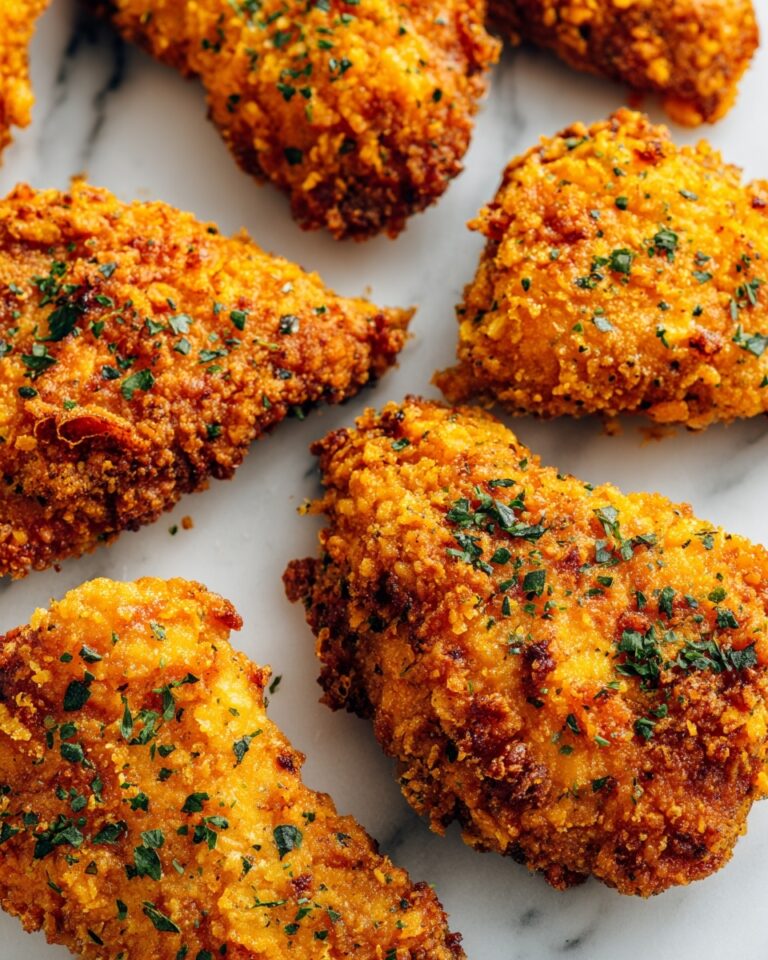If you’ve ever craved a loaf of bread that’s as stunning to look at as it is delicious to eat, this Marble Rye Bread Recipe is exactly what you need in your baking repertoire. The beautiful swirl of light and dark rye, speckled with fragrant caraway seeds, creates a bread that’s full of character, great texture, and layers of flavor that feel both classic and a little bit special. With a moist crumb and subtle hints of honey and molasses, it’s the kind of bread that turns every sandwich or toast into a delightful experience. Let me walk you through how to make this beautiful, comforting loaf step-by-step, so you can share it with your friends and family—or just savor it yourself!

Ingredients You’ll Need
The magic of this Marble Rye Bread Recipe lies in a few simple but thoughtfully chosen ingredients. Each one plays a key role in building that perfect balance of color, flavor, and texture—whether it’s the aromatic caraway seeds adding that iconic rye twist, or the molasses and cocoa powder giving the dark dough its rich hue and depth.
- White rye flour: Provides the signature rye tang and a tender crumb texture perfect for marbling.
- Bread flour: Adds structure and chewiness that keeps the loaf hearty and satisfying.
- Instant yeast: The reliable leavening agent that helps your dough rise perfectly and evenly.
- Salt: Enhances all the flavors and strengthens the dough for better texture.
- Caraway seeds: Traditional rye bread spice that brings aromatic, slightly peppery notes.
- Honey: Adds a natural sweetness to the light dough, balancing the flavors beautifully.
- Butter, softened: Enriches the dough for softness and a tender crumb.
- Molasses: Deepens the color and flavor of the dark dough with its robust, slightly smoky sweetness.
- Unsweetened cocoa powder: Gives the dark dough that classic marble contrast and a subtle chocolate undertone.
- Water (room temperature): Hydrates the flours and helps create the perfect dough texture.
- Egg white: Used for brushing on top to give the crust a lovely shine.
How to Make Marble Rye Bread Recipe
Step 1: Preparing the Light Dough
Start by mixing the dry ingredients for the light dough—white rye flour, bread flour, instant yeast, salt, and caraway seeds—in a large bowl or stand mixer. Add honey, softened butter, and 1 cup of water, then stir until you have a rough dough. Gradually add more water as you knead until the dough feels soft and a little tacky but not sticky. Knead at low speed for about 5 minutes or 7-8 minutes by hand until smooth and elastic. Watch for the windowpane test by stretching a small piece of dough to see light without tearing, which signals perfect gluten development.
Step 2: Preparing the Dark Dough
While the light dough rests, turn to the dark dough. Combine the same dry ingredients—white rye flour, bread flour, instant yeast, salt, and caraway seeds—but mix in molasses, cocoa powder, softened butter, and 1 cup of water instead. Just like with the light dough, knead this mixture until soft and slightly tacky, adjusting with extra water if needed because cocoa can soak it up. This dough will have that rich, chocolaty color that makes your marble rye so visually stunning.
Step 3: First Rise
Place each dough in lightly oiled bowls, turning them over so every surface is coated with oil. Cover these bowls with plastic wrap and set them aside in a warm spot to rise. The doughs should nearly double in size after about 90 minutes. This rise builds flavor and makes your bread’s crumb light and tender.
Step 4: Shaping the Loaf
After the first rise, gently punch down both doughs to release excess gas. Transfer them to floured surfaces to rest for 10 minutes. Then divide each dough into two equal parts, giving you four pieces total—two light and two dark. Roll each piece into an 8×10-inch rectangle, which will make stacking and rolling into the iconic marbled loaf much easier.
Step 5: Creating the Marbled Effect
Stack the rectangles in alternating layers—light, dark, light, then dark. Gently roll the stacked layers together to help them stick as one unit, eliminating any gaps that might break your marble design. Then, starting from the short end, roll the stack tightly into a log. Seal the edges by pinching the seams and ends to keep your loaf intact as it rises and bakes.
Step 6: Second Rise in the Pan
Place your rolled loaf seam-side down into a greased 9×5-inch loaf pan or on parchment-lined baking sheet. Cover loosely with oiled plastic wrap and allow it to rise for 60 to 90 minutes, until almost doubled in size. It should feel puffy and spring back slowly when you press it gently with a finger—a sign it’s ready to bake.
Step 7: Preparing to Bake
Preheat your oven to 350°F about 30 minutes before baking to ensure steady heat. Brush the loaf with a glossy egg white wash made from whisking an egg white and a teaspoon of water. Then sprinkle the top with remaining caraway seeds for a beautiful finishing touch. Score three diagonal slashes on top with a sharp knife or lame; this lets the bread expand attractively as it bakes.
Step 8: Baking the Marble Rye Bread Recipe
Bake the loaf for 40 to 45 minutes until a deep golden brown forms and the internal temperature hits 200°F. If it browns too fast, tent the top with foil to prevent burning while the inside finishes baking. This step ensures a perfect crust and a moist interior.
Step 9: Cooling Your Loaf
Once out of the oven, promptly remove the bread from the pan and set it on a wire rack. Let it cool completely for at least two hours. Cooling is essential—it allows the crumb to set properly and preserves that gorgeous marbled pattern when you slice your bread.
How to Serve Marble Rye Bread Recipe

Garnishes
A sprinkle of extra caraway seeds after brushing with egg wash gives the loaf an irresistible aroma and a beautiful finish. You can also add a tiny smear of softened butter on warm slices to make the flavors come alive even more. A touch of flaky sea salt atop the finished bread before baking can add a brilliant pop.
Side Dishes
Marble rye bread pairs wonderfully with savory fare like smoked salmon, cream cheese, and dill for an elegant appetizer. It’s also a star alongside hearty soups—think creamy butternut squash or tomato bisque. For lunch, it’s perfect for a Reuben sandwich or a classic deli-style piled-high with pastrami and Swiss cheese.
Creative Ways to Present
Show off the marbling by cutting your bread into thick slices and serving it with an assortment of gourmet cheeses and pickles for a charming appetizer board. Toast slices and top them with avocado and a poached egg for a delightful breakfast. You could even turn it into croutons by cubing and baking lightly with herbs—such a flavorful twist on salad.
Make Ahead and Storage
Storing Leftovers
After your Marble Rye Bread Recipe has fully cooled, wrap it tightly in plastic wrap or store it in an airtight container to keep it fresh for up to three days at room temperature. Slicing as needed helps maintain moisture and keeps the loaf from drying out.
Freezing
If you want to enjoy this bread later, freeze it! Wrap the loaf or individual slices tightly in plastic wrap and then aluminum foil or a freezer bag. Frozen Marble Rye Bread maintains its flavor wonderfully and lasts for 2 to 3 months. When you’re ready, just thaw at room temperature.
Reheating
To refresh your bread, gently warm slices in a toaster or oven at 300°F for about 5 to 7 minutes. This brings back that crusty exterior and soft crumb, making every bite taste freshly baked.
FAQs
What makes this a Marble Rye Bread Recipe?
The “marble” refers to the striking visual pattern created by layering light and dark rye doughs rolled together. This contrast is not just beautiful but also offers an exciting flavor combination in every slice.
Can I use active dry yeast instead of instant yeast?
Yes! If you only have active dry yeast, simply proof it first by dissolving it in warm water with a bit of sugar before adding to the dry ingredients. Adjust the rising time accordingly.
Why do I need to do two separate doughs?
Separating the light and dark doughs allows you to create that classic marbling effect. Each dough has unique ingredients like molasses and cocoa powder for the dark dough, which give it distinct flavor and color.
How important is it to do the windowpane test?
The windowpane test is a quick way to check if your dough has developed enough gluten, which ensures a nice chewy texture and good rise. It’s a valuable step, especially for homemade bread.
Can I skip the caraway seeds?
You can, but you’ll miss out on the traditional rye bread aroma and flavor that caraway seeds bring. If you’re not a fan, try substituting with fennel or anise seeds for a different but delicious twist.
Final Thoughts
This Marble Rye Bread Recipe is a fantastic way to elevate your baking with a loaf that’s as unforgettable in taste as it is in appearance. Taking the time to make both doughs and creating that beautiful swirl is rewarding, and sharing it with loved ones makes it even better. So why wait? Grab your ingredients, get your hands floury, and enjoy the warm comfort of freshly baked marble rye bread that’ll keep everyone coming back for more!
Print
Marble Rye Bread Recipe
- Prep Time: 30 minutes
- Cook Time: 45 minutes
- Total Time: 2 hours 15 minutes
- Yield: 1 loaf (9×5 inch), about 12 slices
- Category: Bread
- Method: Baking
- Cuisine: Jewish/American
Description
This Marble Rye Bread recipe combines light and dark rye doughs to create an attractive marbled loaf full of rich flavors from caraway seeds, molasses, and cocoa powder. The bread is soft yet sturdy, perfect for sandwiches or as a flavorful accompaniment to soups and cheeses. The detailed steps guide you through making both doughs separately, layering them for effect, and baking to a beautiful golden crust.
Ingredients
Light Dough
- 1 1/2 cups white rye flour
- 3 cups bread flour
- 1 3/4 teaspoons instant yeast
- 1 1/2 teaspoons salt
- 1 1/2 teaspoons caraway seeds
- 1 tablespoon honey
- 2 tablespoons butter, softened
- 1 1/4 cups water, room temperature (start with 1 cup, add more as needed)
Dark Dough
- 1 1/2 cups white rye flour
- 3 cups bread flour
- 1 1/4 teaspoons instant yeast
- 1 1/2 teaspoons salt
- 1 1/2 teaspoons caraway seeds
- 1 tablespoon molasses
- 2 tablespoons butter, softened
- 2 tablespoons unsweetened cocoa powder
- 1 1/4 cups water, room temperature (start with 1 cup, add more as needed)
Topping
- 1 egg white
- 1 teaspoon water
- 1 tablespoon caraway seeds
Instructions
- Prepare Light Dough: In a large bowl or stand mixer, mix white rye flour, bread flour, instant yeast, salt, and caraway seeds. Add honey, softened butter, and 1 cup of water. Stir until shaggy, then slowly add water until dough is soft and tacky but not sticky. Knead at low speed for 5 minutes or by hand for 7-8 minutes until smooth, elastic, and passing the windowpane test.
- Prepare Dark Dough: In a separate bowl, combine white rye flour, bread flour, instant yeast, salt, and caraway seeds. Add molasses, cocoa powder, softened butter, and 1 cup water. Knead similarly until slightly tacky and elastic, adjusting water for cocoa absorption.
- First Rise: Place each dough in lightly oiled bowls, turn once to coat, cover with plastic wrap, and let rise in a warm spot for about 1.5 hours until doubled in size.
- Divide and Shape: Punch down risen doughs, transfer to floured surfaces, and rest 10 minutes. Divide each dough into 2 equal parts (4 total). Roll each piece into an 8×10-inch rectangle.
- Create Marble Pattern: Stack rectangles alternating light and dark dough: light, dark, light, dark. Gently roll stacked dough to adhere layers, then roll tightly from the short end into a log. Pinch seams and ends closed.
- Second Rise: Place the log seam-side down in a greased 9×5-inch loaf pan or on parchment-lined baking sheet. Cover loosely with oiled plastic wrap and proof for 60-90 minutes until nearly doubled and puffy.
- Preheat Oven and Prepare Topping: Preheat oven to 350°F (175°C) about 30 minutes before baking. Whisk egg white with water and brush over loaf. Sprinkle with caraway seeds. Score three diagonal slashes about ½ inch deep across the top.
- Bake the Bread: Bake for 40-45 minutes until golden brown and internal temperature reaches 200°F (93°C). Tent with foil if browning too quickly.
- Cool Before Slicing: Remove bread from pan immediately and cool on wire rack for at least 2 hours to set crumb and preserve marbled pattern before slicing.
Notes
- The windowpane test ensures gluten development for a light but chewy texture.
- Adjust water quantities as needed, especially for the dark dough, because cocoa powder may absorb more liquid.
- Let the bread cool completely; slicing too soon can cause a gummy texture.
- This bread freezes well; slice before freezing for easy use.
- Using a sharp lame or knife to score the dough allows controlled oven spring during baking.








